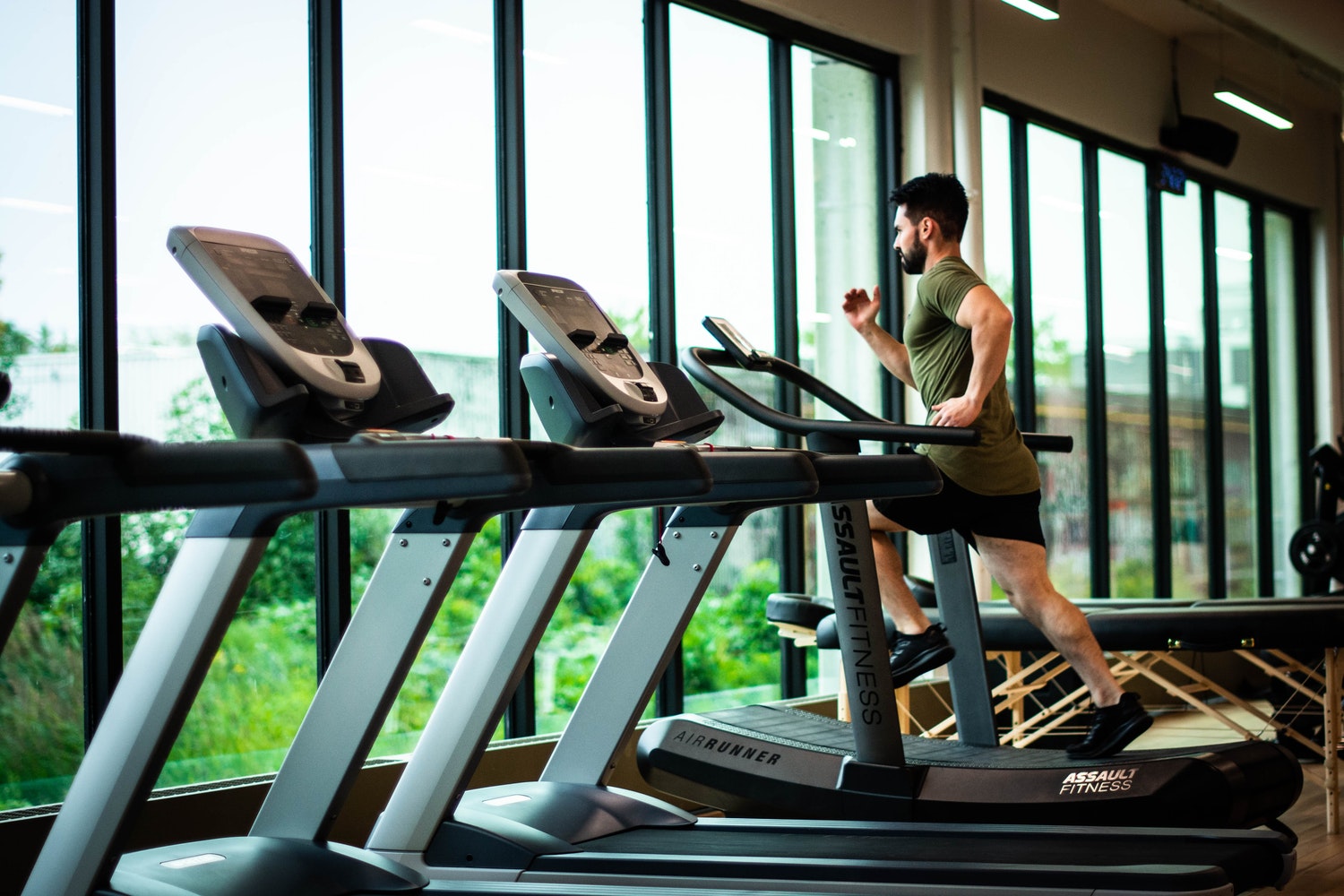Recovery is a crucial aspect of your fitness journey. Without proper recovery, you may increase your risk of muscle strain and overtraining. These risks can have a negative impact on both your performance and results.
Recovery goes far beyond just rest, though. In fact, staying active between workouts may be the best kind of recovery. This is called active recovery. Performing low-intensity workouts following a high-intensity workout, such as rowing with the Ski-Row Air or the Ski-Row Air + PWR machines, may be more beneficial than inactivity.
Benefits of Active Recovery
You may experience delayed onset muscle soreness (DOMS), muscle damage, inflammation, and overall physical fatigue following an intense workout. This is all normal and ultimately leads to an improved physical condition. However, your temptation to lounge on the couch and avoid activity might lead to even more soreness.
Engaging in active recovery can:
- Reduce lactic acid buildup in the muscles
- Eliminate toxins
- Keep muscles flexible
- Reduce soreness
- Increase blood flow
- Help you maintain your exercise routine
How to Approach Active Recovery
There are three ways that you can include active recovery in your fitness routine:
- Between exercise sets
- Immediately following an intense exercise (cool down)
- Between exercise days
Between Exercise Sets
Active recovery will not only help you achieve physical homeostasis, but research also shows that active recovery is superior to passive recovery in boosting performance during workouts.
One study conducted by the High Altitude Exercise Physiology Program found that active recovery was more effective than passive recovery at maintaining endurance performance and sustaining power output.
Endurance performance decreases nearly three times more with a passive recovery when compared to active recovery. Furthermore, with active recovery, power output during exercise is nearly maintained, while with passive recovery, it decreases almost seven times more.
Here are some exercises to try between your next workout sets:
- Lightly jogging after a sprint
- Using a stationary bike at an easy pace after a heavy lift
- Walking a couple of laps after rowing with the Ski-Row Air or the Ski-Row Air + PWR machines
Immediately Following Exercise
It is recommended that you spend 6-10 minutes after your exercise session performing some kind of active recovery. Not only will active recovery after a workout relieve muscle stress and prevent lactic acid buildup, but it can also reduce the risk of dizziness and fainting.
Engaging in light cardio after a workout, such as jogging or using a stationary bike, will allow your heart to slowly reduce to its normal state. A sudden drop in your heart can be dangerous.
Foam rolling is another form of active recovery that can prevent DOMS and lactic acid buildup.
Between Exercise Days
While your initial instinct may be to reserve rest days for watching Netflix, it is actually best to engage in light exercise that keeps your heart pumping. Such activities can include:
- Walking
- Swimming
- Cycling
- Jogging
- Yoga
- Dynamic Stretching
When performing active recovery on rest days, it is best to keep your heart rate at 30-60 percent of its maximum rate. Keep in mind your physical condition. For example, a competitive runner may find jogging an effective form of active recovery; however, that might be too intense for you.
A good method to maintain this is the talk test. If you can hold a steady conversation while doing the activity, it is probably the right level of intensity for your active recovery.
Applying Active Recovery to Your Routine
It is recommended that you incorporate one to two recovery days between each of your strength training sessions. This prevents overtraining and allows your muscles to grow. By training two to three times per week, you will be able to place one to two active recovery days between your workouts.
If you train more than three times a week, you will not include a recovery day between each workout. This makes it even more essential to include active recovery between your sets and immediately following your workout.
What about inactive recovery days? While the occasional inactive recovery day is fine, they are generally not recommended. Not only is active recovery a more effective form of recovery, but daily exercise is also important to your overall health.
Remember that active recovery should not be strenuous. Go for a walk around the neighborhood or swim a dozen laps in the pool. Then you can watch all the Netflix you want.
What Method of Active Recovery Is Right for Me?
There are many ways to include active recovery in your exercise routine. Your goal when performing active recovery is to help our bodies return to a state of homeostasis. This means allowing the energy systems that fuel our movement to return to normal.
To achieve this, you want to keep your heart rate up. However, you also want to avoid overtraining, especially after an intense workout. The negative effects of overtraining include:
- Interrupted sleep
- Elevated resting heart rate
- Overuse injuries
- Diminished performance during workouts
-
In rare cases, Exertional Rhabdomyolysis
Engaging in the proper form of active recovery will allow you to avoid all of these conditions. Here are some popular forms of active recovery that might be right for you:
Swimming
Swimming is a low-impact exercise that is perfect for an active recovery day. Not only is swimming easy on your joints, but the water may also reduce discomfort. Research has shown that swimming after high-intensity workouts can improve your performance.
Tai Chi or Yoga
Both Tai Chi and yoga help stretch sore muscles and increase flexibility. In addition to decreasing muscle stress and discomfort, these activities can also reduce mental stress and anxious feelings.
Walking or Jogger
Conditioned runners may find jogging a more effective form of active recovery, but most people will enjoy many benefits from walking on recovery days. Not only is walking the most accessible form of active recovery, but just a few minutes of it can promote circulation and help reduce stiffness and soreness.
Cycling
Similar to swimming, cycling is a low-impact exercise that is easy on your joints. Cycling at an easy pace will increase your heart rate and prevent lactic acid from building up––especially in your legs.
Cycling can be done on a stationary bike indoors or outdoors on a bicycle.
Precuations
Active recovery exercises are safe and highly beneficial both during and after intense workouts. However, in some cases, it may be best to avoid active recovery.
If you are in pain and suspect you may have an injury, do not engage in active recovery. Halt physical activity until you see a doctor. A doctor may recommend forms of active recovery as you recover from an injury.
It is also important that you listen to your body and avoid overtraining and overexertion. To allow your body to rest, do not exceed more than 50 percent of your maximum effort. If you feel light-headed or dizzy after a workout, do not engage in active recovery.
If your muscles are sore or tight, stretch your muscles via static or dynamic stretching before engaging in an active recovery exercise.
The Breakdown
Recovery is a crucial addition to your exercise routine both during and after workouts. By engaging in active recovery, you can keep your heart rate up and your body in a state of homeostasis. Furthermore, active recovery prevents lactic acid buildup and muscle soreness while keeping the blood flowing and the muscles flexible.
Active recovery exercises include walking, swimming, cycling, and yoga. The best active recovery exercise depends on your body and interests. Just remember not to exert yourself past half of your maximum effort. The goal is to keep your heart pumping, blood flowing, and muscles moving. Overtraining is dangerous and can diminish results.
Try adding active recovery to your exercise routine. Your body may thank you!
Sources:
Active Recovery Workouts: What To Do On Your Rest Day | NASM
Active vs. Passive Recovery and Exercise Performance: Which Strategy Is Best? | ACE
A meta-analysis to determine the dose-response for strength development | NCBI
Rhabdomyolysis: What Every Fitness Pro Needs To Know | NASM
Effects of a recovery swim on subsequent running performance | NCBI





Leave a comment
All comments are moderated before being published.
This site is protected by hCaptcha and the hCaptcha Privacy Policy and Terms of Service apply.